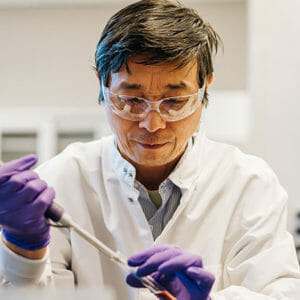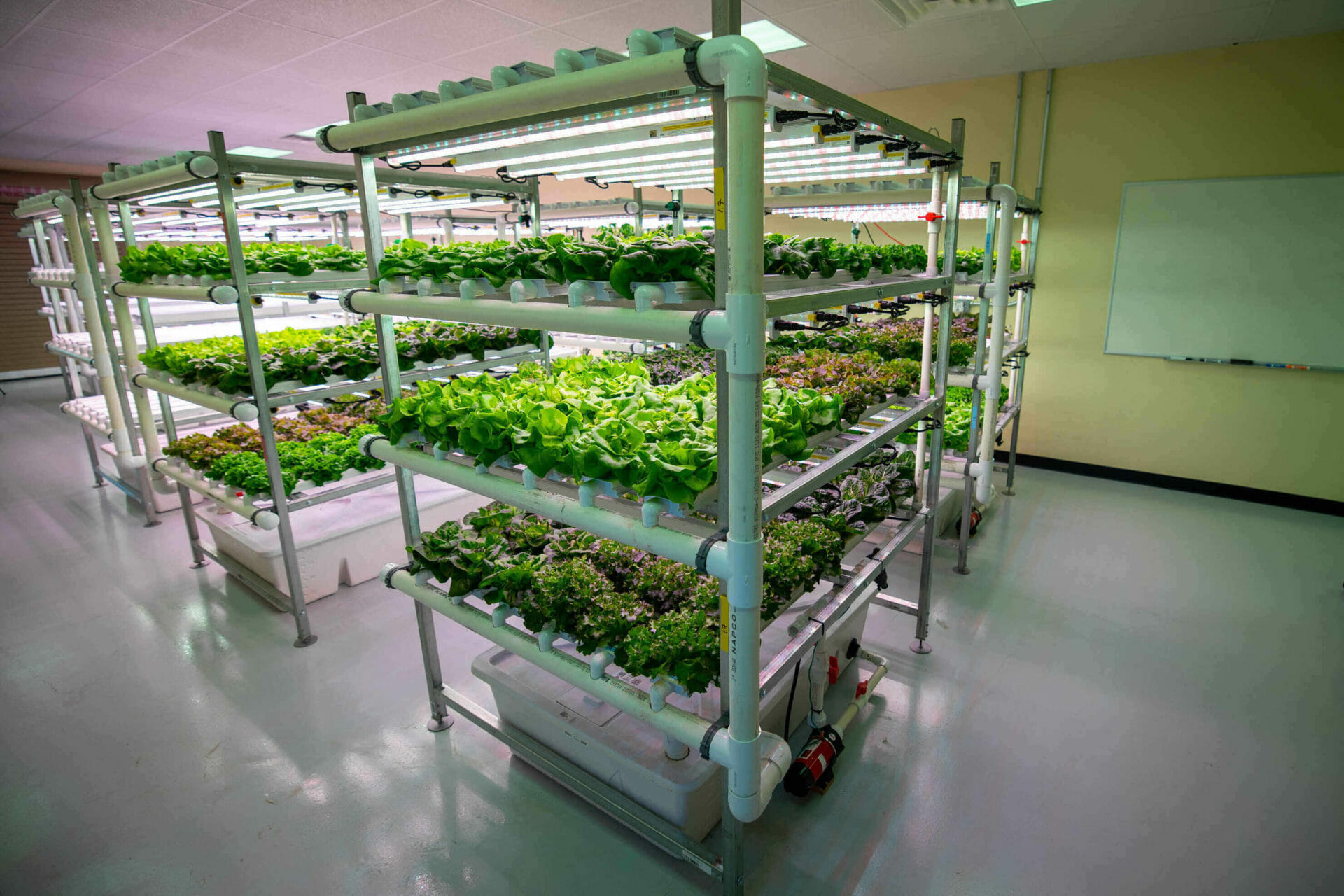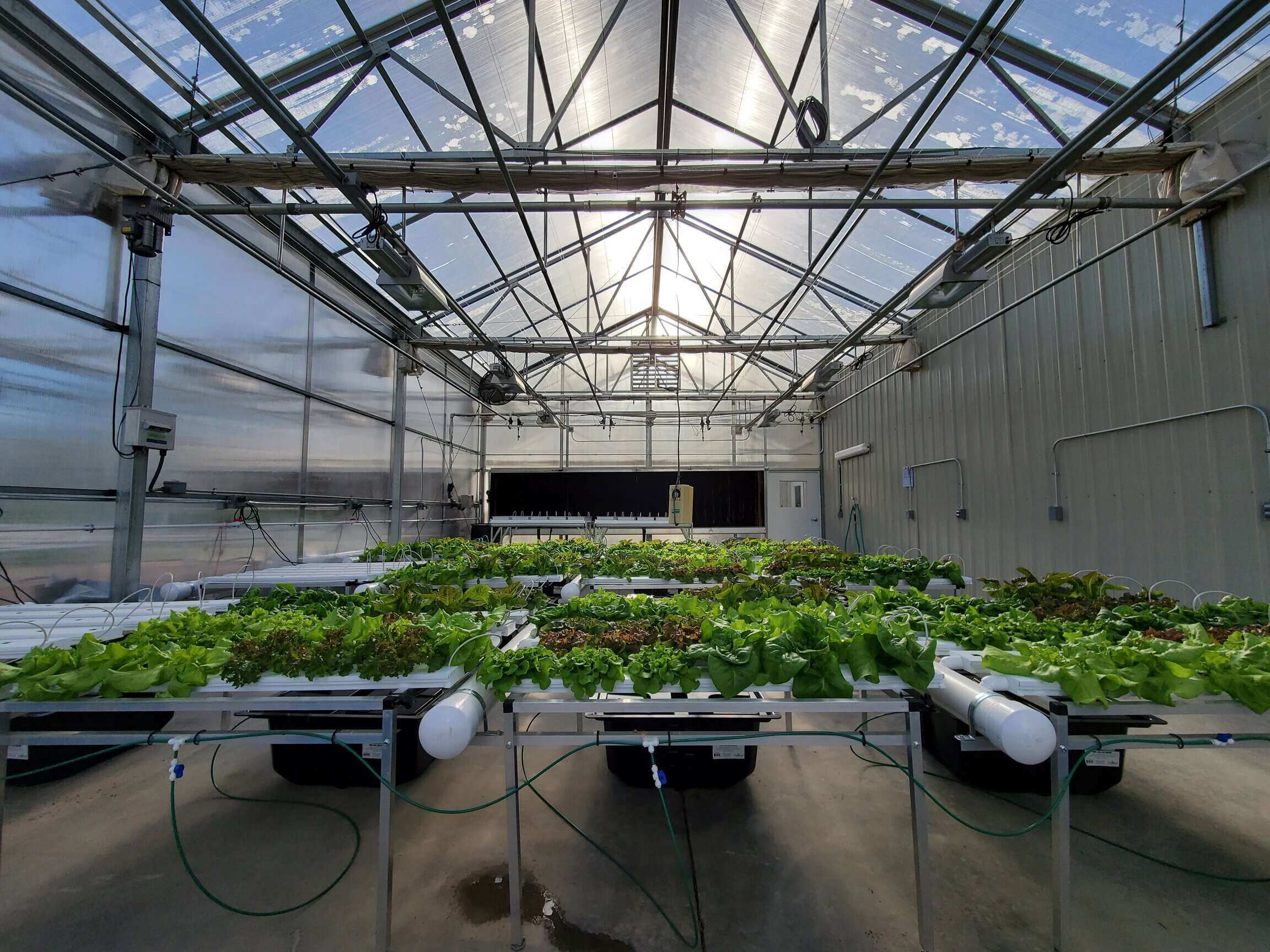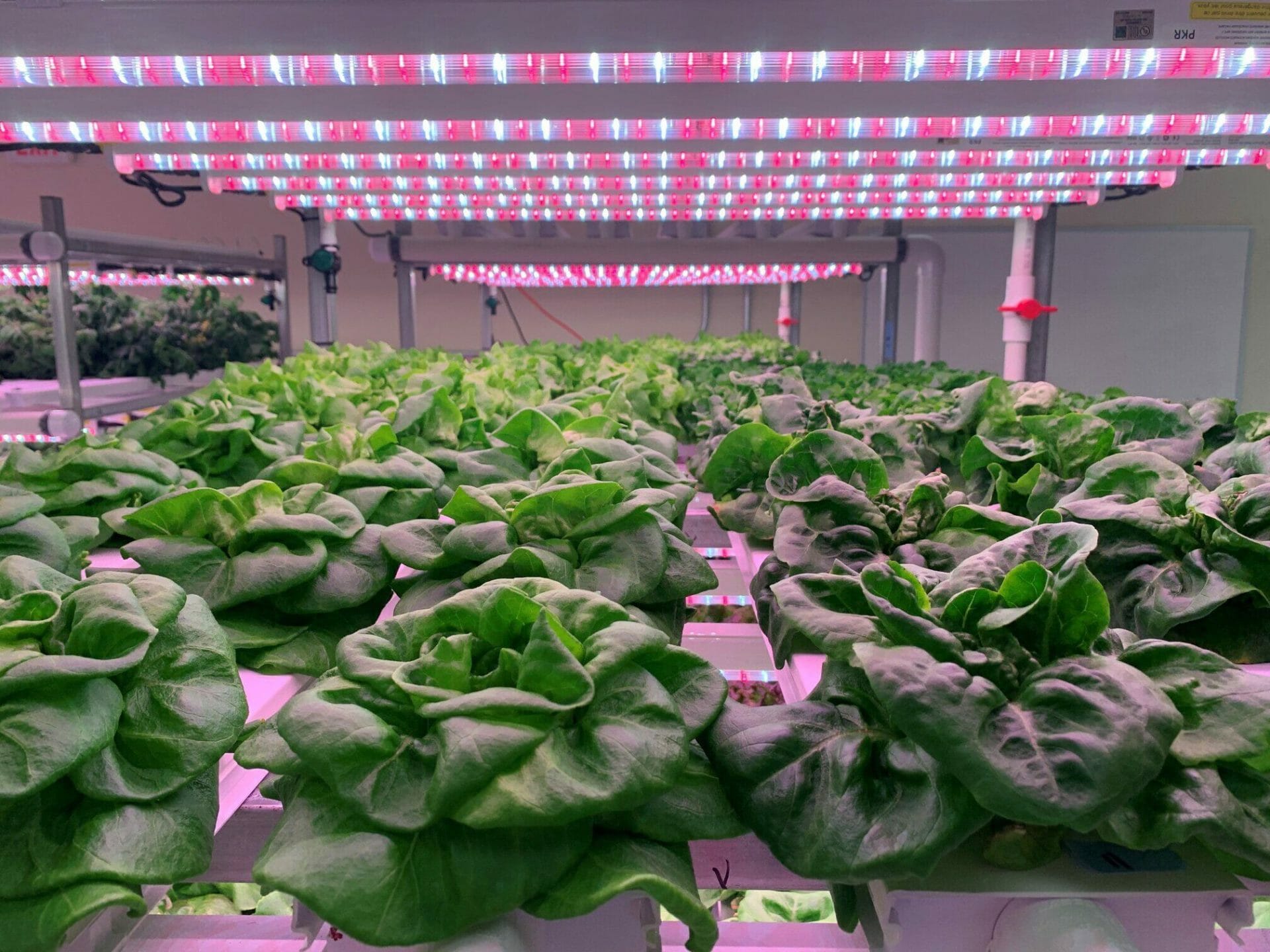Dr. Mei and Colleagues Publish Paper on Bacterial Impact on Hydroponically Grown Lettuce
The Institute for Advanced Learning and Research (IALR) has a library of more than 2,000 endophytes, which are bacteria that occur naturally inside plants. While IALR researchers have generally characterized each of them, they are now conducting endophyte research and tests to evaluate potential uses.
In collaboration with other scientists from IALR, Virginia Tech and Appalachian State University, Dr. Chuansheng Mei published a research article about the positive impacts an endophyte – scientifically known as Pseudomonas psychrotolerans IALR632 – made on lettuce yield and root size. Based on three years of experimentation and testing, the research team found that lettuce plants in several hydroponic systems exposed to the endophyte experienced a significant increase in lateral root development and an average of 15-20% increase in yield.

Dr. Chuansheng Mei, Chief Scientist of the Institute for Advanced Learning and Research (IALR), works with endophytes, or beneficial plant bacteria.
The full article is titled “A Potential Application of Pseudomonas psychrotolerans IALR632 for Lettuce Growth Promotion in Hydroponics and was featured in Special Issue “Interaction of Plants and Endophytic Microorganisms: Community, Functions and Applications by the scientific, peer-reviewed journal Microorganisms.
What Are Endophytes?
On a high level, endophytes are naturally occurring microorganisms that can promote plant growth, enhance nutrient uptake, increase stress tolerance and inhibit diseases. These functions can be classified into two main categories: plant growth promotion (biostimulants) and plant disease control (biocontrol agents).
With public-private partnerships and funding, talented scientists, and exclusive equipment, the Plant Endophyte Research Center has established IALR as a national leader in the exploration of the impact endophytes can have. Particularly, our team looks at the ways that these bacteria influence plant growth when introduced in different environments and stages of the development cycle.
The endophyte IALR632 used in this research was isolated from leaves of Sorghum halepense grown in the foothills of the Appalachian Mountains in Central Virginia. Most of the endophytes at IALR are from plants native to the Appalachian region.
What Did This Endophyte Research Conclude?
This project began with the research team testing the effects of five different endophytes. Among them, Dr. Mei and the research team found that IALR632 had a positive effect on lettuce growth.
This led the team to run additional tests and experiments on six different cultivars of seed-coated lettuce.
Most of the tests were conducted in controlled environment hydroponic systems – which are soilless growing environments that introduce nutrients through a water-based mineral nutrient solution – in the Virginia Tech-IALR Controlled Environment Agriculture (CEA) Innovation Center.
IALR researchers found that IALR632 can increase lateral root development by 164% when added during the germination phase, which could translate to higher yields. When seedlings were inoculated with the endophytes and transplanted, the yield (amount of lettuce produced) consistently increased by an average of 20% or higher.

Several trays of lettuce are grown under LED lights in the Virginia Tech-IALR Controlled Environment Agriculture Center. Ray Meese | Virginia Tech
Significance and Next Steps
The goal of IALR, as well as the Plant Endophyte Research Center as a whole, is not knowledge for the sake of knowledge. All these experiments and tests are focused on finding ways to simultaneously improve environmental sustainability while increasing food production – two directives that have historically been mutually exclusive.
This particular research demonstrated that this endophyte has the potential to promote lettuce growth in different hydroponic environments. While the use of biostimulants, including endophytes, is becoming commonplace in traditional agricultural production, research into their use in controlled environment hydroponic systems is limited and holds great promise in boosting productivity in this rapidly growing sector.
Now that this article has been published, Dr. Mei says that the next step is to continue running tests with IALR 632 in concert with other biostimulants and biocontrol agents (the two general categories of endophytes) on different kinds of lettuce and spinach.
Contributions and Funding
The full list of authors includes:
- Chuansheng Mei, Chief Scientist at IALR
- Dongfang Zhou, a former Research Associate with Virginia Tech at the CEA Innovation Center
- Robert Chretien, Laboratory Research Associate at IALR
- Amy Turner, Laboratory Research Associate at IALR
- Guichuan Hou, Director of Dewel Microscopy Facility, College of Arts and Sciences, Appalachian State University
- Michael Evans, Director of the School of Plant and Environmental Sciences at Virginia Tech and Co-Director of the CEA Innovation Center
- Scott Lowman, Vice President of Applied Research at IALR and Co-Director of CEA Innovation Center
The work happening at the CEA Innovation Center and the Plant Endophyte Research Center often overlaps. For this project, most of the plants were grown in both the greenhouse and indoor portions of the CEA Innovation Center, as different variations were run in the NFT systems and the indoor vertical systems.
The Plant Endophyte Research Center has received more than $1 million in research grants, including a $750,000 Department of Energy Plant Feedstock Genomics Grant and a $258,000 Virginia Tobacco Region Revitalization Commission Grant. This research project was funded through a United States Department of Agriculture (USDA) Specialty Crop Block Grant.

Tables of lettuce grow in one of the Virginia Tech-IALR Controlled Environment Agriculture Innovation Center greenhouses. These plants are part of the endophyte research project completed by Dr. Mei and several colleagues over the past three years.

Lettuce inoculated with an endophyte grows under LED lights in the Virginia Tech-IALR Controlled Environment Agriculture Innovation Center.
